Understanding Jazz Harmony
Jazz harmony can be intimidating for many musicians. Looking at a jazz standard on a piece of sheet music can be quite baffling. Chords sometimes seem unrelated and with all the alterations they have it is often easier just to say “this is not my bag”. So many people walk away from Jazz because they are intimidated by jazz harmony. You need not be! There are foundational principles that can get you through any well known jazz standard when tracking in a Sydney recording studio.
Simplify the voicings.
First of all, for chordal and accompaniment instruments in a sound studio it is rarely necessary to add alterations such as b9, #9, 13 or #5. These are colours that are often expressed in the melody itself. In fact sometime adding the alterations can clash with the melody if it is there as a passing note. Yes, ideally we want to use them to give the standard its colour. However if you are struggling with a first reading of jazz harmony, it is totally acceptable to play the basic foundational chord. These reduce the amount of shapes and voicing you need to grapple with. Here is a chart of 5 basic chord qualities without alterations:
Dominant 7th. 1. 3. 5. b7
Major 7th 1. 3. 5. 7
Minor 7th. 1. b3. 5. b7
Half diminished. 1. b3. b5. b7
Diminished 1. b3. b5. 6
Simpler than it looks
Quite seriously that is all you need to find your way through a jazz standard. Also it is worth bearing in mind that you rarely even need to add the 5th of the chord. The 3rd and the 7th are what gives a chord its unique character. Even in a Half Diminished chord where the b5 is unique, a beginner jazz student can still play 1, b3, b7 (the same 3 note voicing as a minor 7th chord) without interfering with the harmony or the rest of the band in a Sydney recording studio.
There is just no need to avoid jazz any longer. However start with what you know and add to it slowly. Just playing through the tonic, 3rd and 7th of every chord in a standard will give you a beautiful insight into the “harmonic flow” of the song.
Other useful approaches can be applied step by step once the above method is conquered. For example if you are comfortable with simple 1 3 7 voicing’s (or better still ONLY 3 and 7 voicing with out tonic. Yes that’s right 2 notes are more effective than 3 when there is a bass player in the band!) Having said that, we can now begin to approach the extensions in a non intimidating way.
Simplifying extensions
Approaching the b9 in jazz harmony is easier than we think. When you see a dominant 7th b9 chord you can simply choose to play ANY diminished triad off the b9 itself, the 3rd, 5th and 7th. This is because the entire chord is a diminished chord with a different bass note. Remember the bass note/tonic is not your responsibility when there is a bass player in the band when jamming in a music studio in Sydney. For example:
C7b9 you can quite safely play any of the following:
Edim. (Built off the 3rd)
Gdim. (Built off the 5th)
Bbdim (Built off the 7th)
Dbdim (Built off the b9th)
Most importantly the aim of this article is to make life easier for intermediate/beginner players when reading or recording a jazz standard. So when you see a progression like this: Dm9. G7b9. Cma9#11
Your options can be very simple and very tasteful.
A D minor 7th chord with no 5th will suffice – though the 5th is ok also if its easier (try 5th fret root note voicing from the A string)
for the G7c9 Just play a D diminished from the same position!
Landing on the Cmajor is a simple 3 note voicing going downwards from the 5th fret, voicing: G B E
All the above is accomplished with hardly any movement and can be applied time and again in any key for any II V I progression.
The next step
Let’s use the same example and try a different position and add perhaps 1 more extension.
Try from the 10th fret:
Dm7 3 note voicing (E string root note on 10th fret)
G7b9 – Ab diminished (from the Ab on the A string)
Cma9#11 – Similarly, the simple major 7 shape (3 note voicing) with C root note on the 8th fret. If you are ready, you can leave off the root note: C and play the upper 2 notes B and E (9th fret D and G strings) and simply add a D on top (10th fret high E string). You could simply play a G major 7 triad (this contains G, B, D and F#). This is particularly allowable if the there is a pianist in the group that will cover the 3rd of the harmony. Another option is to simply play an Em9 chord or Em7. This covers the upper harmony of a Cma9#11chord quite comprehensively. However, that is slightly more advanced and will be covered in another blog about recording in a Sydney sound studio.
Beginning to think in full triads and chords that start on the 3rd and the 5th of the chord you are comping will give you a head start for playing extensions!
Some other useful shapes and ideas are located here at Learn Jazz Standards.
Various 3 note voicing positions:




